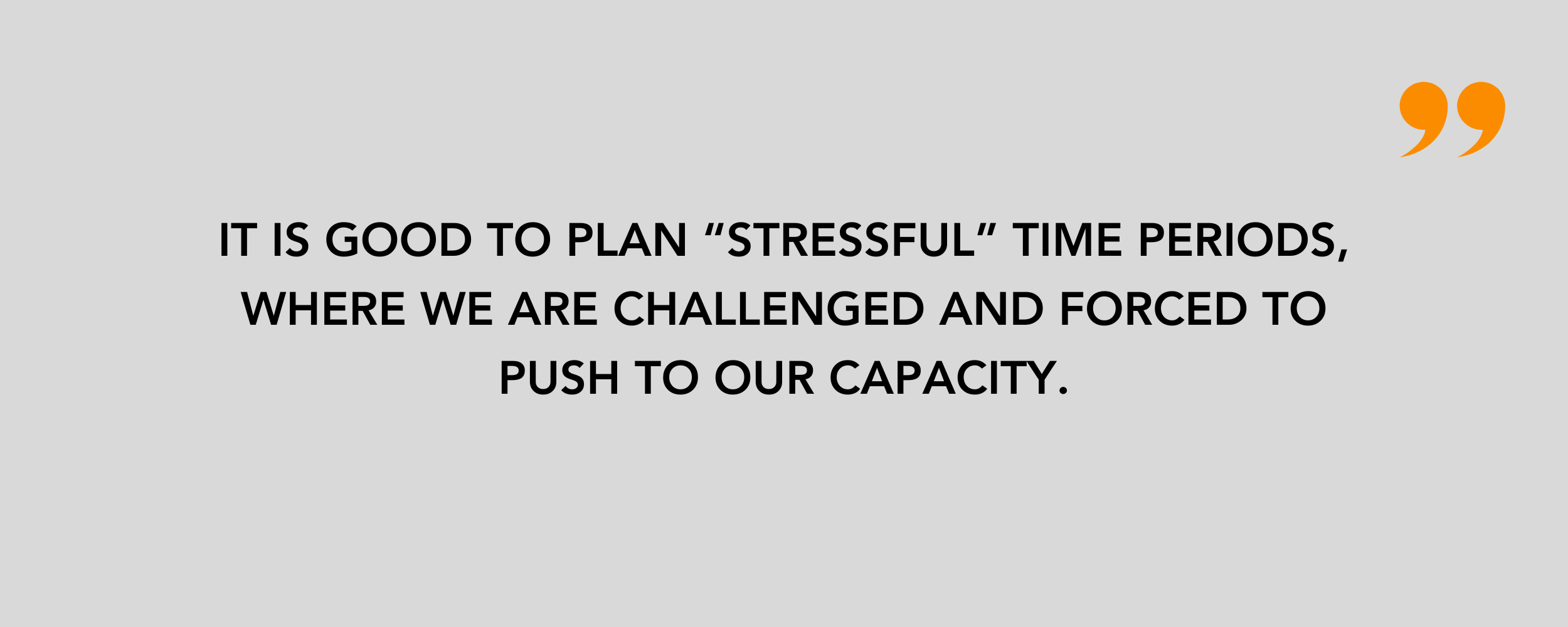
I would like to share six secrets on time management to start the New Year with fresh insights and practices for being productive and working smart in the midst of turbulent time pressure.
We have to constantly deal with interruptions, distractions, competing priorities, and unforeseen crises no matter where we are. However, there is a way to manage our time well and wisely in order to
- Manage our stress level in a positive way
- Get more done every day
- Stay energetic and productive in the long run
- Become more productive instead of staying later, working more or trying yet another questionable tip
Time Management Secrets
The following six insights are based on the best-selling book The Power of Full Engagement by Jim Loehr and Tony Schwartz. I met Jim and Tony personally, attended their presentations and workshops, read their book and applied their ideas into my life over the last few years. It pays off.
#1: To better manage time, we have to learn to better manage our energy
Many productivity thinkers over the years have focused on the idea of time: there is a limited number of hours in a day. Time goes by, second by second, minute by minute, hour by hour – there’s no stopping it and we can’t really manage it.
What we can manage is the energy we bring to those hours. To be an effective and productive person, it’s important to spend those hours wisely, i.e. according to our energy level.
If we’re low on energy, it doesn’t matter how much time we have available to accomplish a task – we’ll be so exhausted that we will not get the expected performance outcome. On the other hand, when we have a ton of energy, we can get many things done in very little time.
The key to effective time management is effective energy management: establish ways to feel energetic – and highly energized – each day.
#2: Effective use of available energy will get results
Energy is expandable; time is not. We only have so much energy to use each day. However, we can expand our capacity for productive effort. As long as we take care of ourselves and pay attention to how much energy we have, we can accomplish surprising amounts of work.
On a calendar, there’s no visible difference between 8 – 9am and 1-2pm.
Physically and energetically, there’s a huge difference. Our body operates in energy cycles in which our energy fluctuates up and down. Like the circadian cycle, which is responsible for our waking/sleeping pattern, there are other cycles as well, which naturally oscillates every 90 minutes between high and low energy. Those cycles are normal, so it is useful to pay attention to them. Every hour and a half or so, your body needs a bit of relaxation and rest. Powering through the dip in energy is actually counterproductive – we are not giving our body the rest it needs to operate at peak performance.
#3: Think like an athlete!
When working, think like a sprinter – we can cover a lot of ground in a quick burst, but we can’t keep up that pace all day. With a little rest between bursts, however, we can sprint over and over again.
When we sprint or run fast for hours, we’ll wear ourselves out, and we’ll need a longer period of recovery before we are ready to go again. At the extreme, some people work themselves to exhaustion, at which point their body forces them to recover via injury or illness. We can only push ourselves so much. There are physical limits. Recovery is mandatory, not optional.
Top athletes plan cycles of high performance (training, competition) and relaxation (rest, recover). When an athlete overtrains, he runs the risk of reaching a breaking point, or injury, and his performance diminishes.
As “corporate” athletes, we too have to think in cycles when it comes to effective and healthy time management.
#4: Strategic disengagement is one of the best productivity enhancement tools
Some people think of human beings as mechanized robots in a sense: no breaks during work hours, no lunchtime, no recovery – all day, every day. That’s a recipe for disaster.
Humans are “energy” beings, and we have physical needs. It’s useful to think of our body as one integrated energetic system, which we use to get things done. If that system breaks or wears down, we won’t accomplish anything.
Just as we regularly fill the gas tank of our vehicle, we have to refill our “energy” tank. We need relaxation, rest, recovery, and rejuvenation. One of the best ways to maintain high level of performance over the year is taking breaks; a concept called strategic disengagement. Based on our individual energy cycles of high performance and relaxation, it is critical to plan and take phases of strategic disengagement to refill the gas tank and capitalize on effective time management – before we run out of gas.
#5: Stress is a good thing – if used consciously
From a physical and energy standpoint, it is as important to take strategic breaks, as it is critical to exert stress. There is positive stress (eustress) and negative stress (distress) – usually people refer to stress as “distress”. Positive stress is good. If I want to build stronger muscles, putting stress and tension on the muscle will help grow it. Therefore, it is good to plan “stressful” time periods, where we are challenged and forced to push to our capacity. Too often, we do that, but unconsciously until we break down. The critical element is to do it intentionally.
Conscious (positive) stress management is like a form of energy resistance training. Stress becomes a signal our bodies use to generate more energy to meet the demand. As long as we’re getting enough rest and recovery, it pays to exert – even exhaust – ourselves. We get stronger, build resilience and expand capacity for energy.
#6: Establish daily “energy management” habits
Taking care of yourself and maintaining a high energy level is a huge priority. There are four types of energy:
- Physical energy: to stay physically energized
- Mental energy: to maintain mental focus
- Emotional energy: to be emotionally connected and present
- Spiritual energy: to live with purpose and meaning
Managing your physical energy is the most important factor to effective time management. If we run out of physical energy, all other energies will be negatively impacted.

There are three areas that will help keep your physical energy levels high each day:
1) Food is your body’s fuel – ensure you’re getting enough (not too much), that’s it’s high quality, and that it contains enough of the protein and nutrients your body needs to function optimally. Additionally drink enough water. Stay away from refined sugars. When in doubt, eat like humans ate thousands of years ago.
2) Time management at its best: Rest, relax, sleep – give you body appropriate amount of time to recover; daily, weekly, monthly. Listen to your body and plan what is best for you. Everybody is different and has different needs. Personally, I need 8 hours of sleep; I have a friend who only needs 5 hours.
3) Physical exercise – working out is one of the most effective “positive” stress management tools. Ensure you include cardio training (to keep your heart healthy) and resistance training (to keep your body and muscles strong).
Since everyone’s energy cycles are different, it is beneficial to learn what yours are. I recommend using a “daily time log”: record your energy levels throughout the day. Every hour or so, tune into how you’re feeling – are you at a high point, or at a low point?
Once you understand your energy patterns, it’s easier to plan your day and manage your time.



